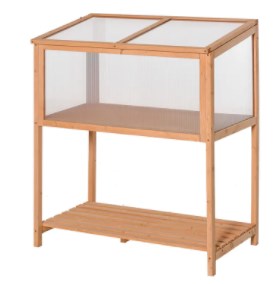The custom wooden greenhouse, a versatile structure in the realm of horticulture, is designed to cater to the diverse needs of plant cultivation. One of the critical aspects of these structures is their ventilation system, which plays a pivotal role in maintaining the optimal growing conditions within the greenhouse. This article explores the adaptability of the ventilation systems in custom wooden greenhouses to different climate conditions and how they ensure the health and productivity of the plants within.
Ventilation in a custom wooden greenhouse is essential for regulating temperature, humidity, and air circulation, which are vital for the well-being of the plants. The design of the ventilation system must take into account the specific climate conditions of the area where the greenhouse is situated. For instance, in hot and arid climates, the system must be capable of providing ample cooling and humidity control to prevent heat stress and dehydration of the plants. On the other hand, in colder regions, the ventilation system should be designed to minimize heat loss while still providing adequate air exchange to prevent the buildup of excess moisture and the growth of mold and mildew.
One of the key features of a custom wooden greenhouse's ventilation system is its adaptability. Many greenhouses are equipped with automated systems that can open and close vents based on the temperature and humidity levels inside the structure. This allows for precise control over the internal environment, ensuring that the plants receive the optimal conditions for growth regardless of the external climate.
In addition to automated systems, custom wooden greenhouses can also incorporate passive ventilation techniques. These include the use of natural convection, where warm air rises and escapes through vents at the top of the greenhouse, drawing in cooler air from the bottom. This method is particularly effective in maintaining a consistent temperature and preventing the formation of hot spots within the greenhouse.
Another important aspect of the ventilation system in a custom wooden greenhouse is its ability to manage humidity levels. High humidity can lead to the growth of mold and other diseases, which can be detrimental to the health of the plants. By incorporating features such as ridge vents, side vents, and even fogging systems, the greenhouse can effectively control humidity levels and maintain a healthy environment for plant growth.
The materials used in the construction of the custom wooden greenhouse also play a role in its ventilation capabilities. Wood, being a natural insulator, can help to maintain a stable internal temperature while still allowing for air exchange. Additionally, the use of double-glazed windows or polycarbonate panels can provide extra insulation, further enhancing the greenhouse's ability to adapt to different climate conditions.
In conclusion, the ventilation system in a custom wooden greenhouse is a critical component that ensures the optimal growing conditions for plants, regardless of the external climate. By incorporating a combination of automated and passive ventilation techniques, as well as utilizing the natural insulating properties of wood, these greenhouses can adapt to a wide range of climate conditions. This adaptability not only ensures the health and productivity of the plants but also contributes to the sustainability and efficiency of the greenhouse as a whole.



